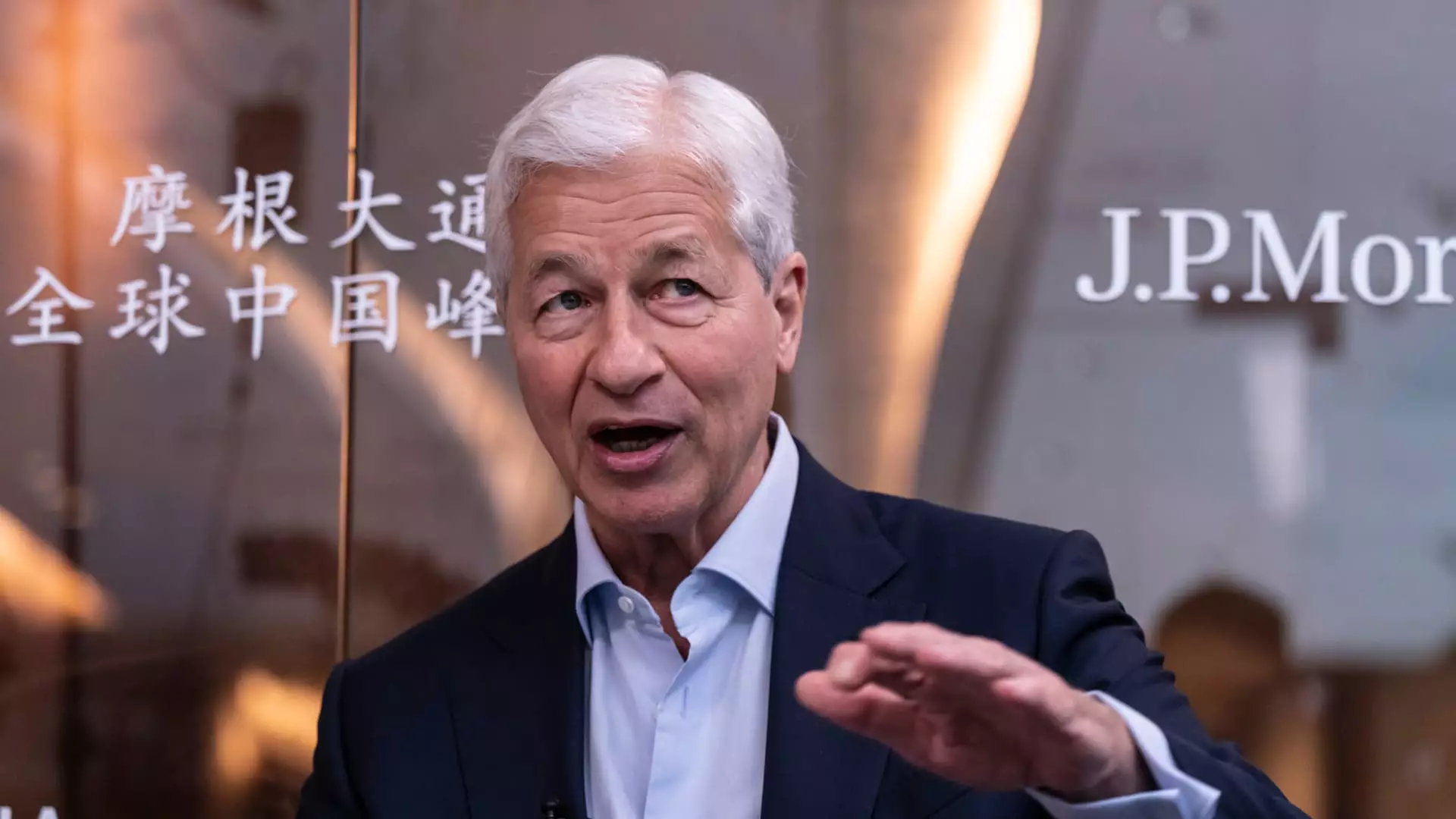In a landscape dominated by online giants, JPMorgan Chase has audaciously declared itself a leader in the online investing game. Recently, the bank introduced new tools that enable investors to buy bonds and brokered CDs, leveraging its existing mobile app. This announcement, while ambitious, raises questions about the sincerity behind JPMorgan’s claims to leadership. Can a bank that has long struggled to catch up to the likes of Charles Schwab and Fidelity really position itself as a frontrunner in such a crowded field?
The narrative is framed by JPMorgan’s vision of simplifying fixed-income investing. Paul Vienick, head of online investing at the bank, insists that they have effectively transitioned the ease of purchasing stocks and ETFs into the realm of bonds. While the intention is commendable, one has to pause and assess whether this is simply an attempt to masquerade their weaknesses in a more appealing light.
Playing Catch-Up in a Competitive Field
Let’s consider the context. JPMorgan Chase is a behemoth in the financial sector—undoubtedly the largest U.S. bank by assets. However, in the self-directed investing arena, it is akin to David taking on Goliath. With just over $100 billion in assets under management, JPMorgan’s efforts seem paltry when juxtaposed with competitors who have spent decades fostering relationships and cultivating investor loyalty.
The bank’s history reveals attempts at innovation that haven’t quite landed as expected. When JPMorgan launched its “You Invest” platform in 2018, it aimed to capitalize on a burgeoning trend towards commission-free trading. Yet, by 2021, even the bank’s CEO acknowledged the initiative’s shortcomings, bluntly stating it was “not a very good product.” Acknowledging that something is broken is a commendable first step, but the question remains—can JPMorgan actually fix what’s wrong?
Understanding the Shift: A New Leadership Strategy
In a bid to revitalize its offerings, JPMorgan made a strategic hire in October 2021, bringing Vienick onboard to spearhead a new direction in wealth management. His wealth of experience at firms like TD Ameritrade and Morgan Stanley comes with a hopeful promise; yet one has to wonder whether merely hiring the right people will yield the transformative change that JPMorgan so desperately needs.
The overarching theme of this shift is a newfound ambition to target the self-directed investor—the individual who takes charge of their financial destiny. By offering enticing incentives like up to $700 for transfers to its self-directed platform and promising to introduce after-hours trades, the bank projects a message of commitment to capture the attention of more engaged investors. But such approaches might resonate more as desperate gimmicks than as credible strategies.
Consolidation in a Dwindling Market Space
Another layer of this endeavor appears to hinge on encouraging existing customers to consolidate their financial activities within JPMorgan. The bank’s ambitious target of crossing the trillion-dollar mark in self-directed investments is undoubtedly grand, but it requires the cultivation of trust—and right now, that trust seems tenuous. The fragmented nature of financial services means customers often prioritize convenience and transparency over brand loyalty.
Furthermore, JPMorgan’s reliance on a traditional branch network can be both a boon and a bane. While having a physical presence connects them to affluent households, the evolving investor demographic is increasingly inclined towards digital solutions, potentially alienating some of its core clientele. Finding a balance between leveraging established strengths and adapting to a rapidly changing landscape is crucial, but so far, the signs throughout these initiatives have been mixed.
The Reality of Investment Trends
Moving towards a more holistic approach to asset management, Vienick acknowledges that many investors engage with financial advisors yet still use online platforms for trading. This duality poses yet another challenge, as it reveals the necessity for banks to go beyond traditional advisory roles. JPMorgan’s insistence on creating a unified, single-view financial ecosystem is a solid idea, yet it needs to be executed with genuine commitment to transparency and simplification—attributes that the bank has been widely criticized for lacking.
As JPMorgan seeks to elevate its standing in the online investing world, its position remains precarious. The bank may hold the financial muscle to make waves, but unless it can convincingly transform its offerings to better meet the needs of modern investors, it runs the risk of being sidelined yet again. It’s not just about declaring leadership; it’s about delivering a framework that earns investors’ trust in a space where trust and innovation are paramount. The clock is ticking for JPMorgan, and time will tell whether it’s merely a hollow claim or the beginning of a genuine evolution.

